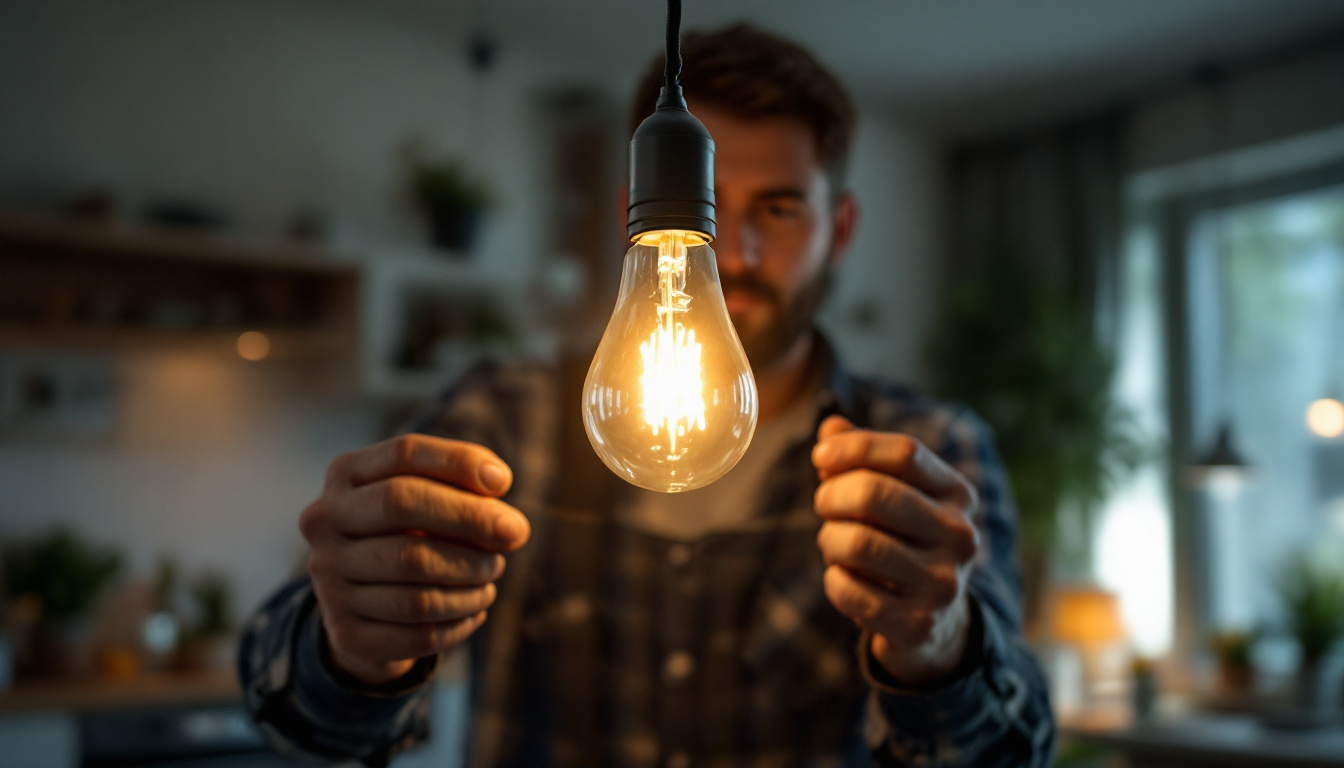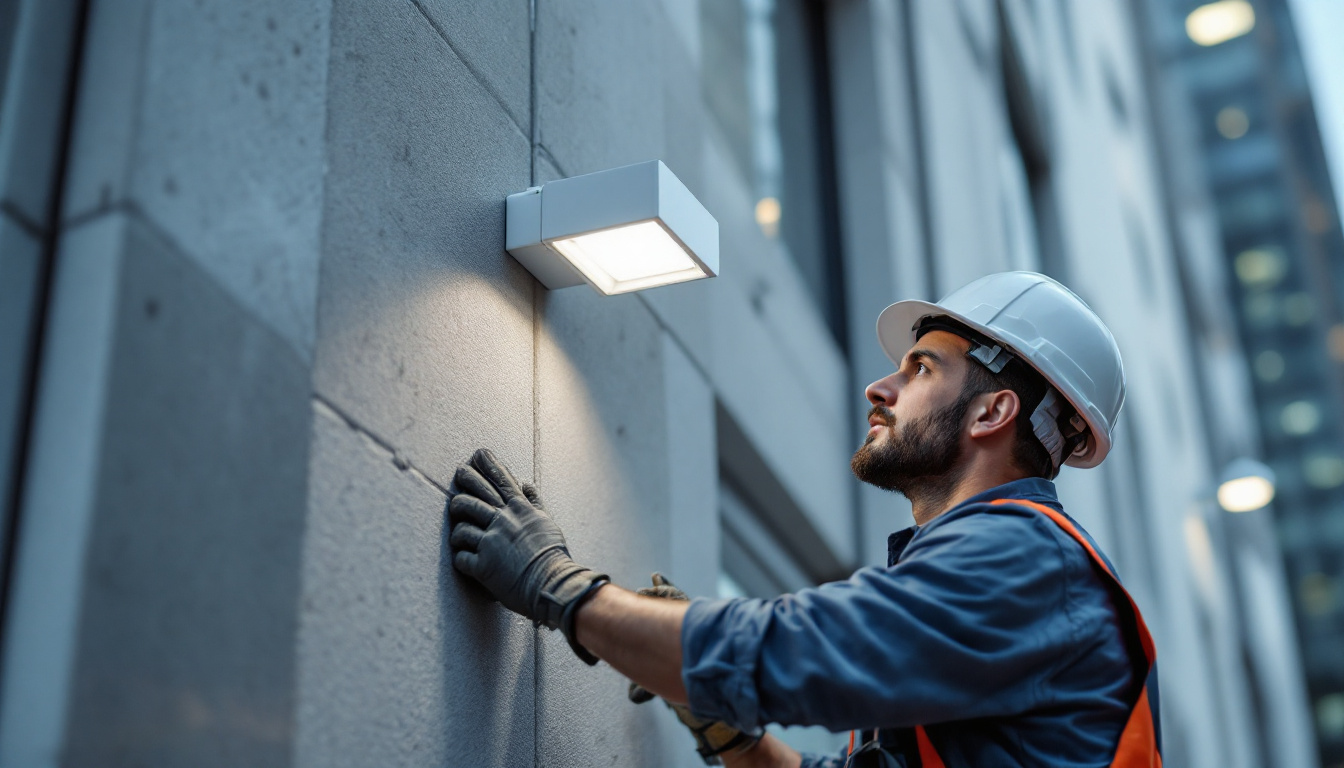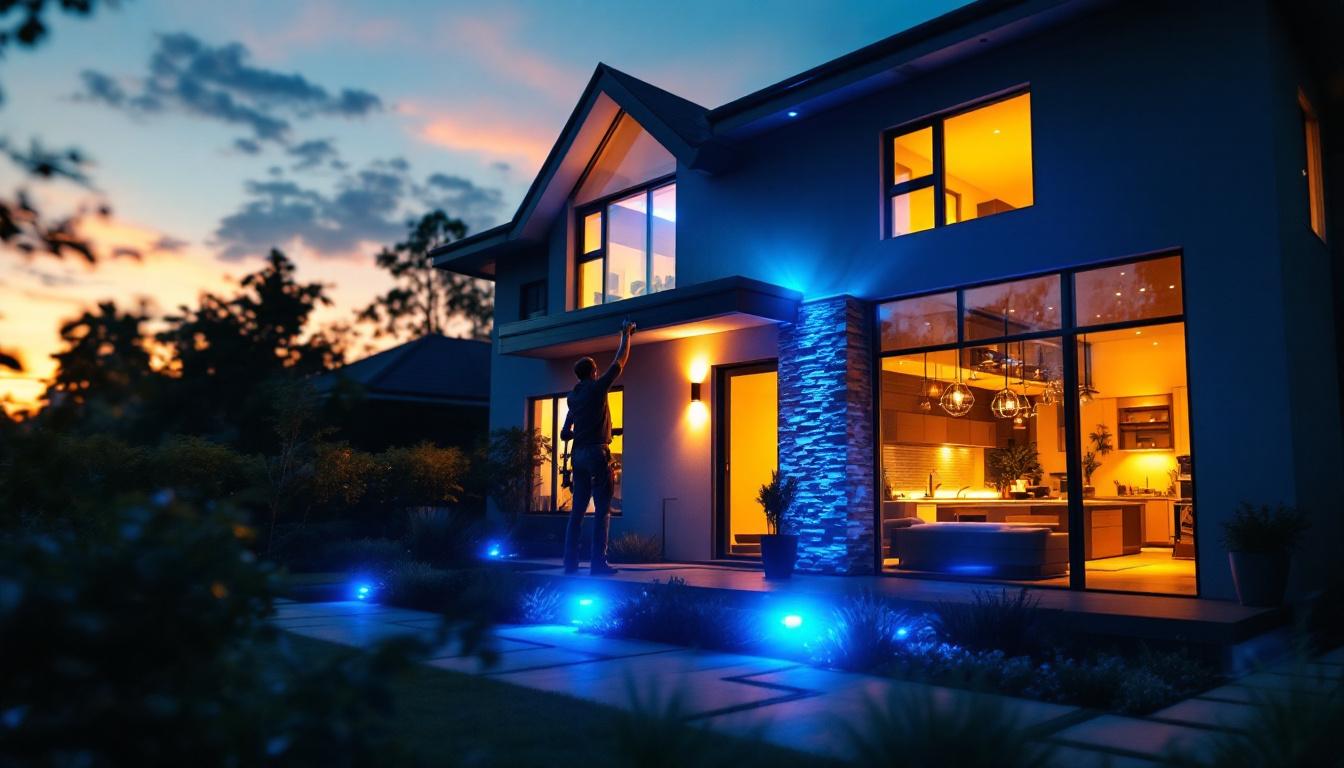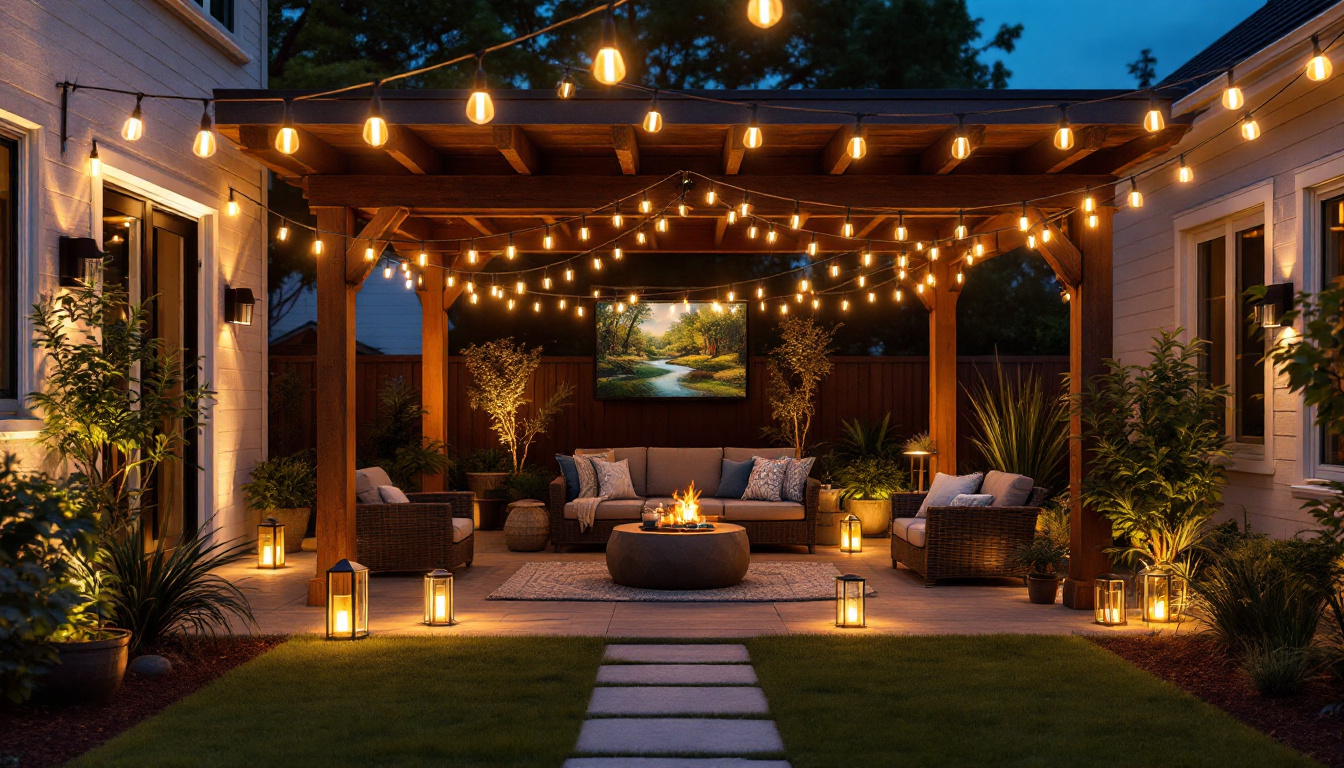
Lighting contractors often face a myriad of challenges in their line of work, particularly when it comes to the dual role of lighting: providing illumination and generating heat. The interplay between these two functions can complicate projects, especially when energy efficiency and client satisfaction are at stake. This article explores the challenges lighting contractors encounter with heat generation from light bulbs and offers practical solutions to overcome these hurdles.
Understanding how light bulbs generate heat is crucial for lighting contractors. While the primary purpose of a light bulb is to provide illumination, the heat produced can significantly impact the environment in which they are installed. Different types of bulbs, such as incandescent, fluorescent, and LED, have varying heat outputs, which can influence energy consumption and overall system performance. Additionally, the heat generated can affect the longevity of the fixtures and the surrounding materials, making it essential for contractors to consider these factors when designing lighting solutions.
Incandescent bulbs are notorious for their high heat output. Approximately 90% of the energy consumed by these bulbs is converted into heat rather than light. This inefficiency can lead to increased cooling costs in warmer climates, making them less desirable for energy-conscious clients. Furthermore, the excessive heat can pose a fire hazard if the bulbs are placed too close to flammable materials, necessitating careful consideration in their placement.
On the other hand, LED bulbs are more efficient, converting a higher percentage of energy into light. However, they still produce some heat, which can be a concern in enclosed fixtures or small spaces. Understanding the specific heat output of each bulb type allows contractors to make informed decisions about which lighting solutions to recommend. For instance, in applications where heat buildup could be problematic, such as in art galleries or museums where temperature control is critical, selecting the right bulb type is paramount to preserving the integrity of the displayed items.
Clients today are increasingly aware of energy efficiency and its impact on both their utility bills and the environment. As a result, they often expect contractors to provide solutions that minimize heat generation while maximizing light output. This expectation can create pressure for contractors to stay updated on the latest technologies and best practices in energy-efficient lighting. Additionally, many clients are interested in smart lighting solutions that not only reduce energy consumption but also offer features like dimming and color temperature adjustment, further complicating the decision-making process.
Moreover, clients may not fully understand the implications of heat generation from lighting. Educating them about the benefits of choosing energy-efficient options can help manage their expectations and lead to more satisfactory outcomes. By providing clear comparisons between different bulb types, including their heat outputs and energy efficiencies, contractors can empower clients to make choices that align with their values and needs. This educational approach can also foster trust and strengthen the contractor-client relationship, as clients appreciate guidance that considers both their immediate needs and long-term sustainability goals.
Lighting contractors encounter various challenges when dealing with heat generation from light bulbs. These challenges can range from technical issues to client communication hurdles, each requiring a strategic approach to overcome.
One of the most significant technical challenges is ensuring that lighting fixtures are designed to handle the heat produced by the bulbs. Inadequate ventilation can lead to overheating, which not only affects the lifespan of the bulbs but also poses a fire hazard. Contractors must assess the compatibility of fixtures with the chosen light bulbs and ensure proper installation to mitigate these risks.
Additionally, when retrofitting older buildings with modern lighting solutions, contractors may face difficulties in integrating new technologies with existing electrical systems. This can lead to unexpected heat generation issues if not properly addressed during the planning phase.
Effective communication with clients is essential for lighting contractors, especially when discussing the implications of heat generation. Many clients may prioritize aesthetics or initial costs over long-term efficiency and safety. Educating clients about the benefits of energy-efficient lighting and the potential risks associated with excessive heat can help foster a collaborative environment.
Providing clear explanations and visual aids can also enhance client understanding. For instance, demonstrating how different bulb types perform in terms of heat generation can help clients make informed decisions that align with their goals.
To navigate the complexities of heat generation in lighting, contractors can adopt several strategies. These approaches not only address technical challenges but also enhance client relationships and project outcomes.
Before commencing any lighting project, conducting a thorough assessment of the space is vital. This includes evaluating the existing electrical system, the layout of the space, and the intended use of the lighting. Understanding these factors can help contractors recommend the most suitable bulb types and fixtures, minimizing the risk of heat-related issues.
Additionally, considering the thermal dynamics of the environment can lead to better design choices. For instance, in areas prone to high temperatures, recommending LED fixtures with appropriate heat dissipation features can significantly reduce the risk of overheating.
The lighting industry is continually evolving, with new technologies emerging regularly. Staying informed about the latest advancements in energy-efficient lighting can empower contractors to provide the best solutions for their clients. This includes understanding the benefits of smart lighting systems, which can adjust brightness and heat output based on real-time data.
Participating in industry seminars, webinars, and training sessions can enhance knowledge and skills, allowing contractors to stay ahead of the curve. Networking with peers and manufacturers can also provide insights into emerging trends and best practices.
Offering comprehensive lighting solutions that address both illumination and heat management can set contractors apart from competitors. This may involve recommending fixtures with built-in cooling systems or suggesting the use of dimmers and timers to control energy consumption and heat output.
Furthermore, incorporating design elements that enhance ventilation and airflow can help mitigate heat buildup. For example, installing fixtures that allow for better air circulation can prolong the lifespan of bulbs and improve overall system efficiency.
Examining real-world examples of successful heat management in lighting projects can provide valuable insights for contractors. These case studies highlight innovative approaches and practical solutions that have effectively addressed heat generation challenges.
In a recent project involving a large commercial office space, contractors faced the challenge of high heat output from traditional incandescent bulbs. To address this, they conducted a comprehensive assessment of the lighting needs and recommended a complete retrofit to LED fixtures. This not only reduced heat generation but also significantly lowered energy costs for the client.
Additionally, the contractors implemented a smart lighting control system that adjusted brightness based on occupancy and natural light levels. This approach not only enhanced energy efficiency but also improved the overall comfort of the workspace.
In a residential project, contractors encountered issues with excessive heat in a small kitchen area. The existing lighting fixtures were not designed to handle the heat output of the installed bulbs, leading to frequent bulb failures. To resolve this, the contractors recommended replacing the fixtures with models specifically designed for high-temperature environments.
Moreover, they suggested installing under-cabinet LED lighting that provided ample illumination while minimizing heat generation. This solution not only improved the kitchen’s functionality but also enhanced its aesthetic appeal.
As the lighting industry continues to evolve, several trends are emerging that can further impact how contractors approach heat management. Staying ahead of these trends can provide a competitive edge and enhance project outcomes.
Smart lighting solutions are becoming increasingly popular, offering enhanced control over both illumination and heat output. These systems can automatically adjust brightness based on occupancy, time of day, and even weather conditions. By integrating smart technology, contractors can provide clients with energy-efficient solutions that minimize heat generation while maximizing comfort.
Moreover, smart lighting systems often come with data analytics capabilities, allowing contractors to monitor energy consumption and heat output over time. This information can be invaluable for optimizing future projects and ensuring ongoing client satisfaction.
There is a growing emphasis on sustainability within the lighting industry, with many contractors adopting eco-friendly practices. This includes using energy-efficient bulbs, sustainable materials for fixtures, and implementing recycling programs for old lighting equipment. By prioritizing sustainability, contractors can not only reduce heat generation but also appeal to environmentally conscious clients.
Additionally, incorporating renewable energy sources, such as solar power, into lighting designs can further enhance energy efficiency and reduce reliance on traditional energy sources.
Lighting contractors face unique challenges when it comes to heat generation from light bulbs. By understanding the intricacies of different bulb types, effectively communicating with clients, and adopting innovative strategies, contractors can successfully navigate these challenges. As the industry continues to evolve, staying informed about emerging technologies and trends will be essential for providing optimal lighting solutions that meet client needs while minimizing heat-related issues.
Ultimately, a proactive approach to heat management not only enhances the quality of lighting projects but also fosters long-term client relationships and contributes to a more sustainable future in the lighting industry.
Ready to tackle the challenges of heat generation in lighting and exceed your clients’ expectations? Choose LumenWholesale for your next project and experience the difference quality makes. Our spec-grade lighting products provide the efficiency and performance you need, all at unbeatable wholesale prices. Say goodbye to middleman markups and hello to a vast selection of top-tier lighting options that meet the highest industry standards. Plus, with free shipping on bulk orders, you can ensure your projects shine without breaking the bank. Don’t compromise on quality or value—visit LumenWholesale today for wholesale lighting at the best value.

Discover the ultimate guide to wire waterproof connectors tailored for lighting professionals.

Discover essential insights and expert tips on Rab Wall Pack lighting solutions tailored for contractors.

Discover how blue light outside your house can boost lighting efficiency for contractors.

Discover the latest trends in backyard lighting that every contractor needs to know.